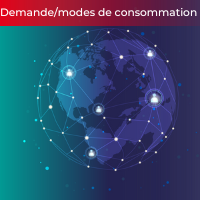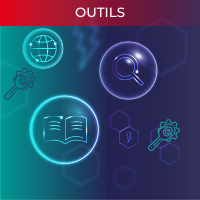At I-Tésé, our mission is to provide a systemic understanding of the economics and sustainability of energy systems through the kind of transitions that will be necessary to achieve Net Zero.
 Learn more about our mission
Learn more about our mission
We believe that this will require advancing our knowledge of three energy-transition pillars:
- Demand-side patterns and consumer behaviors in a Net Zero world;
- Low-carbon energy production and storage technologies and the materials necessary to deploying these technologies; and
- The many interfaces that occur between these pillars in a given legislative and regulatory environment.
Our systemic approach is based on:
- A deep understanding of the costs of different technologies, the economics of energy systems, and lifecycle analyses of key materials.
- A clear picture of demand patterns and consumer behaviors with inputs from the social sciences and humanities.
- Multifactor Multicriteria analysis and other advanced methods.
- Numerical models to provide insights into possible pathways to Net Zero and to inform technology development roadmaps.
- Knowledge of current and future laws and regulations and their potential impacts, with a focus on France and Europe.
Our research :
Technologies :
At I-Tésé, we focus on the low-carbon energy production and storage technologies being developed by CEA labs. However, we also keep a close eye on developments around other energy technologies.
Key materials for the energy
transition
In terms of nuclear energy, we have acquired a detailed understanding of uranium and fuel cycle management and have developed system dynamics and other modeling tools. These advances are based on our research of the upstream and downstream segments of the nuclear power chain. We are now able to bring these tools and methods, originally developed for nuclear energy, to other critical energy transition materials like lithium and cobalt.
Demand-side patterns and consumer behaviors
Since the industrial revolution, energy demand has risen dramatically, and new demand-side patterns and consumer behaviors have emerged. On a broader level, rising energy consumption equates with economic development and better standards of living. Until very recently, dwindling fossil fuel supplies were considered the primary roadblock to the unbridled growth of energy demand. Today, however, consumer lifestyles and habits are changing. The array of new technologies available is mind boggling. Some industries have changed so much they are almost unrecognizable. As these and other trends continue to gain traction, they will likely have huge qualitative and quantitative impacts on energy demand.

Demand-side patterns and consumer behaviors
Market design and regulation
To achieve Net Zero, today's energy markets will have to invest on an unprecedented scale. Regulators will have to come up with new frameworks to ensure that the necessary financing is available. In Europe, for example, the electricity market is currently set up so that the operation of existing generation assets is what “pays." There are no real incentives for stakeholders to commit to the kinds of long-term capital expenditures that the energy transition requires. Market design reforms will be critical.
At I-Tésé, we develop forecasts and make recommendations based on our analysis of the latest research coming out of university laboratories and recommendations put forward by energy industry stakeholders.
Tools
I-Tésé has developed a proprietary toolkit of numerical models, data and information sets, and analysis methods.
 Numerical models
Numerical models
Numerical models capable of supporting systemic analysis are vital to our work at I-Tésé. We are active users and developers of analysis and modeling software, utilizing the CEA's proprietary data to build and test scenarios for customers within and outside the organization. By providing factual estimates of the value the technologies being developed can capture or create, we also support the CEA's technology development roadmaps.
 Knowledge bases
Knowledge bases
The data and information sets
we use are stored in shared data and knowledge bases available to all CEA
departments.
 Methods
Methods
Our specialists develop multicriteria,
system dynamics, and other analysis methods.

Tools